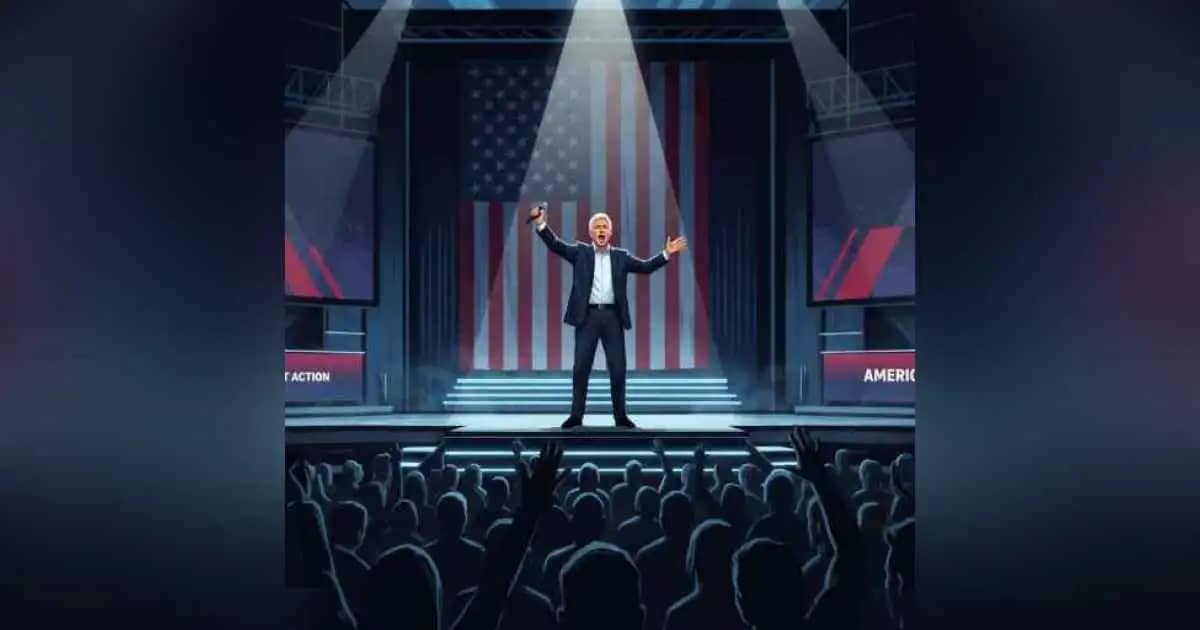
Charlie Kirk Explained: Biography, Career Highlights, and Leadership Lessons
Discover key facts, life events, and the impact of American activist Charlie Kirk.
Introduction
Charles James “Charlie” Kirk (October 14, 1993 – September 10, 2025) was a prominent American conservative activist, media personality, and organizer. He co-founded Turning Point USA, built a strong youth-led movement, and played an influential role in shaping right-wing political discourse in the 21st century. His life was cut short by assassination while speaking on a college campus.
This article presents a biographical sketch, 10–15 key facts, an overview of his contributions, and then practical How To and FAQ sections to help readers engage with his legacy, critique it, or apply lessons from it.
Biography / Life Overview
Below is a narrative overview of Kirk’s life, followed by more granular facts.
Charlie Kirk was born on October 14, 1993, in Arlington Heights, Illinois. (wrightfuneralhomeandcrematory.com) He attended Wheeling High School and later enrolled at Harper College, though he left formal education to pursue political activism. (wrightfuneralhomeandcrematory.com (1)) In 2012, at age 18, he co-launched Turning Point USA. (VPM) Over the years, he expanded his influence via media, writing, campus organizing, and allied organizations such as Turning Point Action and Turning Point Faith. (Wikipedia)
On September 10, 2025, Kirk was fatally shot while speaking at Utah Valley University in Orem, Utah. (ABC News) His death was widely reported as a political assassination, and it sparked both tributes and debate about his influence. (The Guardian)
After his death, many statements hailed him as a martyr for free speech or conservative values. (The White House) His wife, Erika Frantzve, survived him, along with their children. (wrightfuneralhomeandcrematory.com again)
10–15 Key Facts About Charlie Kirk
Here are significant facts about Kirk:
-
- Full name and birthdate: Charles James Kirk was born October 14, 1993. (Wikipedia (1))
- Place of birth: Arlington Heights, Illinois. (more on wrightfuneralhomeandcrematory.com)
- Education: Attended Wheeling High School; studied at Harper College for a time but left to focus on activism. (wrightfuneralhomeandcrematory.com →)
- Founding of Turning Point USA: Co-founded in 2012 at age 18. (VPM (1))
- Leadership roles: He served as executive director of TPUSA and later created affiliated organizations including Turning Point Action and Turning Point Faith. (Wikipedia again)
- Media and publications: Hosted The Charlie Kirk Show and wrote books expressing conservative ideas. (more on wikipedia)
- Youth influence: He became one of the most visible voices in the MAGA/conservative youth movement, particularly in colleges. (VPM again)
- Political alignment: Strongly aligned with conservatism, Christian nationalism, Trumpism, and often engaged in culture wars topics (e.g. free speech, abortion, gender ideology). (Wikipedia →)
- Organizing controversies: His group turned campus activism into a battleground, sometimes accused of influencing student elections and violating campaign or nonprofit rules. (Wikipedia (5))
- Funding growth: TPUSA’s revenue grew dramatically — from modest beginnings to tens of millions in donations. (Wikipedia again)
- Public recognition & backlash: He was both celebrated as a youthful conservative leader and criticized for extremist rhetoric or organizational practices. (The Guardian (1))
- Marriage & children: Married Erika Frantzve in 2021 and had two children. (more on wikipedia)
- Assassination: He was shot and killed on September 10, 2025, during a public speaking event at a university. (ABC News (1))
- Posthumous commemoration: The U.S. House passed a resolution honoring his life and legacy. (docs.house.gov)
- Proposed legacy symbols: After his death, some Republicans proposed putting his image on U.S. currency (a silver dollar). (Fox News)
Contributions & Impact
Charlie Kirk’s contributions and influence are multifaceted — some celebrated, some controversial. Below is an overview:
1. Mobilizing Conservative Youth
Kirk’s greatest impact may lie in mobilizing conservative students and young adults. Through TPUSA, he created a nationwide network of campus chapters, events (e.g. Student Action Summit), and media outreach tailored to youth audiences. (Wikipedia →)
2. Shaping the Discourse
He helped push topics like free speech, “cultural Marxism,” identity politics, and skepticism of progressive academia into center stage among conservative circles. (PBS)
3. Organizational Innovation
By combining activism, media, and branding, Kirk built a hybrid model: nonprofit, political advocacy (via Turning Point Action), and faith-based outreach (TPUSA Faith). This structure allowed him to engage in politics more directly while maintaining media presence. (Wikipedia (9))
4. Fundraising & Scaling
Under his direction, TPUSA scaled from a small campus group to a multi-million-dollar national organization. (PBS (1))
5. Media & Messaging
Kirk’s podcasts, appearances, and writings allowed him to broadcast his ideas widely. He was seen as a communicator who could translate conservative ideas into youth-friendly language. (The Guardian again)
6. Political Influence
Though not an elected official, Kirk exerted influence on Republican politics, including student elections, public debate, and strategic alliances with conservative leaders. (Wikipedia again)
7. Controversy & Critique
His work also sparked significant criticism: accusations of manipulating student elections, failing to fully disclose partisan activity, internal staff complaints about discrimination, and aggressive rhetoric. (more on the guardian)
8. Martyrdom & Symbolic Legacy
His death transformed him into a symbol in certain conservative circles — invoking debates about free speech, political violence, and the future of youth activism. (The Guardian →)
How To: Engaging with His Legacy Today
If you want to write about, analyze, or engage with Charlie Kirk’s ideas and legacy, here is a “how to” guide.
How to Analyze / Critique His Ideas
-
- Start with primary sources
- Read Kirk’s own books, podcasts, speeches, and articles to understand his framing and language.
- Review Turning Point USA’s reports, tax filings, or strategic documents (if publicly available).
- Contextualize culturally and politically
- Place his ideas within the broader American conservative movement, especially the MAGA era.
- Understand historical precedents (youth movements, campus activism) and compare.
- Check factual claims and sources
- Many provocative statements or criticisms of “cultural Marxism,” campus bias, etc., rest on contested claims.
- Use independent academic or journalistic sources to confirm or refute assertions.
- Examine organizational structure and governance
- Look at how TPUSA, Turning Point Action, and TPUSA Faith are legally structured, funded, and operated.
- See if there are documented criticisms or audits.
- Consider voices of former staff / insiders
- Many critiques emerge from former employees or staff; their testimonies can offer internal perspective.
- Balance these with external assessments to avoid one-sided narratives.
- Trace influence over time
- Map how his ideas spread: on social media, in student elections, policy debates, etc.
- Evaluate which parts of his agenda gained traction or failed.
How to Use His Approach in Activism / Writing (if you sympathize with or want to emulate some methods)
-
- Audience targeting
- Focus on youth audiences, especially on campuses or via digital platforms.
- Tailor message framing, symbols, and media formats to appeal to that group.
- Branding and consistency
- Maintain coherent branding (theme, values, logo, slogans).
- Be consistent in messaging across channels (social media, podcasts, events).
- Hybrid model
- Combine nonprofit/advocacy, media, and event-based activism.
- Use allied arms (education, faith, local chapters) to diversify reach.
- Decentralized chapters + local empowerment
- Establish local chapters with autonomy but shared values and standards.
- Support leadership training and networking.
- Strategic partnerships
- Align with celebrities, media outlets, or institutions to amplify reach.
- Collaborate with influencers, allied think-tanks, or political figures.
- Crisis readiness & reputation management
- Prepare for backlash, controversies, or media attacks.
- Establish clear communication norms, fact-checking, and internal checks.
FAQs (Frequently Asked Questions)
Q1: What is Turning Point USA and how was it started?
A: Turning Point USA (TPUSA) is a conservative nonprofit organization focused on youth activism, especially on college campuses. Kirk co-founded it in 2012 when he was around 18. (more on vpm) It grew by establishing campus chapters, organizing summits, and promoting conservative ideas to students.
Q2: Was Charlie Kirk an elected politician?
A: No. He never held public office. His influence was through activism, media, and organizing rather than electoral position. (more on wikipedia)
Q3: What were some controversies surrounding Kirk and TPUSA?
A: Some of the controversies include:
-
- Allegations of influencing student elections through support or coordination. (Wikipedia →)
- Claims of discriminatory internal workplace culture, including accusations by former staff about racial biases. (The Guardian (5))
- Questions about whether political activity by TPUSA or affiliated groups violated nonprofit rules. (Wikipedia (13))
- The use of hardline or polarizing rhetoric on issues like gender ideology, abortion, and race. (PBS again)
Q4: What books or media did Charlie Kirk produce?
A: Kirk hosted The Charlie Kirk Show and published several books articulating his views. (Wikipedia again) The exact list of books may require a bibliographic check (not all sources list them).
Q5: Why is his death considered politically significant?
A: Because he was a visible conservative youth leader, his assassination during a public event raised concerns about political violence, free speech, and the security of public figures. It turned him into a symbolic martyr in many conservative circles. (The Guardian again)
Q6: Did Kirk’s organizations continue after his death?
A: Yes, TPUSA and its affiliated arms are expected to continue, often with new leadership. Indeed, the House resolution honoring him and public statements suggest intent to preserve his legacy. (docs.house.gov (1))
Q7: What critiques exist about Kirk’s model?
A: Some critics say his approach encourages ideological echo chambers, undermines academic neutrality, and uses aggressive messaging that polarizes rather than persuades. Others point to transparency issues, governance, and potential abuse of nonprofit/political boundaries. (more on the guardian)
Related article: Short Inspirational Stories With Powerful Life Lessons





